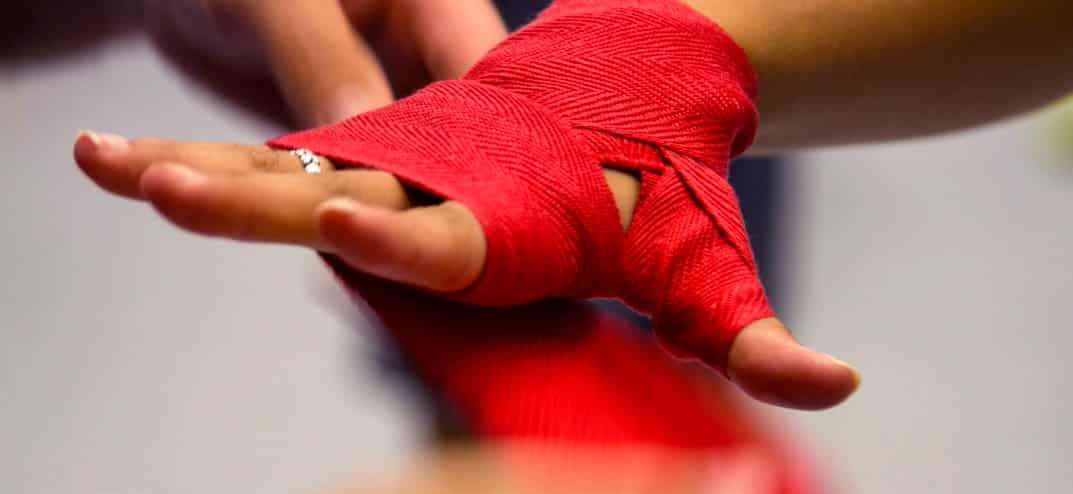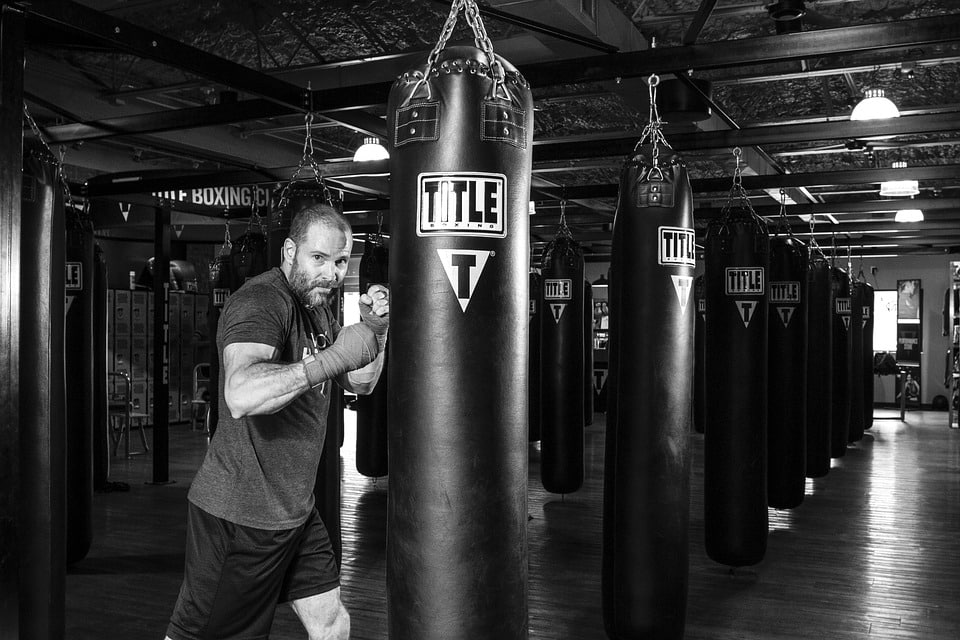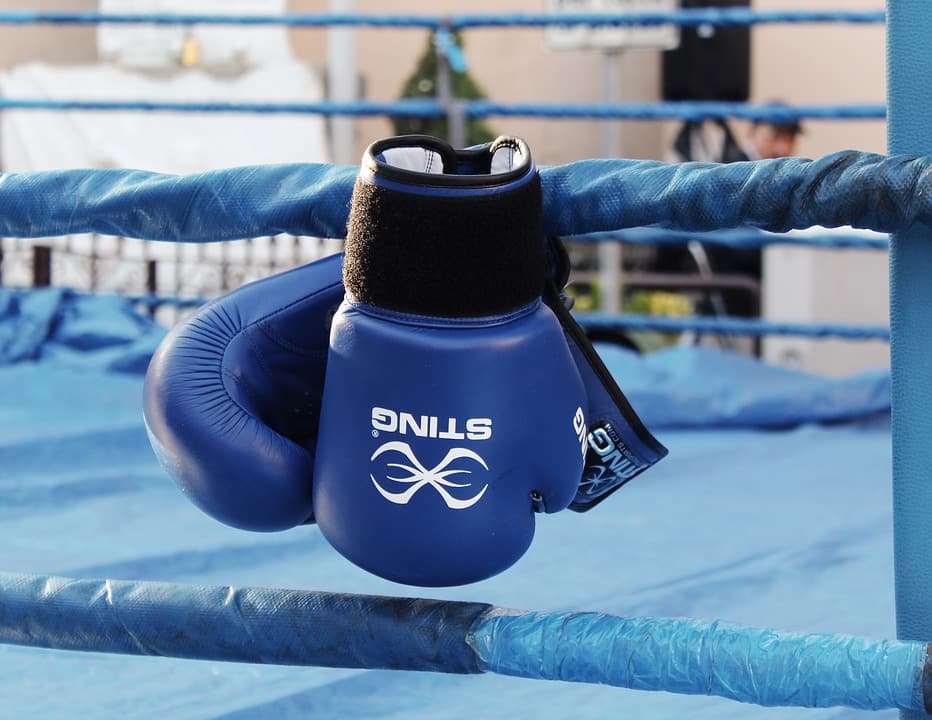Whether you’re a seasoned pro who’s been boxing for years or someone just looking to get started, one thing you’ll know is that you need some sort of hand protection before you slip a pair of boxing gloves on. This applies whether you’re sparring, working the heavy bag or getting into the ring for your next fight.

However, there are a few different methods of hand protection. Of course, there’s the tried and tested boxing wraps which have been used for decades, but recently manufacturers have released a few alternatives, aimed at the amateur and professional alike and primarily with the goal of cutting down the time needed to wrap your hands. These are mainly in the form of quick wraps or gel inner gloves.
There’s a lot of misconceptions about these products, and it’s easy for a beginner to get overwhelmed with what’s being said in forums and gyms across the country. What this article will do is provide some clarity on the situation, so you can make an informed choice based upon your budget, your needs and your experience level.
Why do you need hand protection?
First off, let’s go through why we need to protect our hands when we do combat sports, either with wraps or gel wraps/inner gloves. This may seem obvious, but it’s crucial (especially if you go down the route of wrapping your hands) that you understand exactly why we use hand protection in addition to boxing gloves, and what purpose it serves.
The main reason we use hand protection is to prevent injury to the hand or wrist. Hand wraps and inner gloves do this by providing support to small bones, joints, tissues and tendons within the hand. Bones in particular are fragile, and the constant force of punching either a bag or your opponent’s face can cause them to become fractured or damaged.
What hand protection does in addition to this is distribute the force of the punch across the entire hand. It does this by keeping moving joints, such as the fingers, in place. If you’ve ever punched something with your bare hand, you’ll know that for example if your fingers move as you strike the object, you’re liable to cause yourself an injury. A hand wrap or inner gel forces your fingers to stay still, and by doing so, the shock of the punch is absorbed by the whole hand and not just the small area of impact.

What this also means is that actually, you can punch somebody harder than if you had no wraps, because you’re not in as much danger of causing injury to yourself. Hand wraps or gloves compress the hand, and keep it compressed at the point of impact.
What advantages are there to using inner/gel gloves?
We’ve covered both wraps and inner gloves so far, but I just want to preface this with a word about hand wraps in general. Generally, to properly wrap your hands for a fight, your trainer or cutman will have their own method of wrapping. There are different ways of wrapping your hands to protect against different things - for example, more wrist support, more padding across the knuckles, etc. If you’re susceptible to particular injuries, or you have problems with a particular joint in the hand, you can change the way you wrap to provide extra support to problem areas.
You sacrifice this flexibility with inner gloves. Inner gloves are a catch-all, designed primarily for two things: speed, and ease of use.
If you’re a beginner, it’ll likely take you a while to learn how to wrap your hands properly. What’s more, improperly wrapped hands can lull you into a false sense of security, leading you to believe your hands are safer than they are (because you haven’t wrapped them properly) and causing injury. A good pair of inner gloves protects against this, because there’s nothing to go wrong; you slip the inner glove on, slip your boxing glove on and away you go.
There are two main types of inner gloves. These are just how I differentiate them - you may find them called slightly different things by other boxers.
Fast Wraps/Quick Wraps
Quick wraps or fast wraps are generally the lower priced of the two different styles. They look like a fingerless glove with padding around the knuckles. Generally the padding tends to be quite thick, as it’s layered foam. The foam is designed to absorb the impact of the punch, dispersing it across the knuckles rather than it being concentrated in one area.
In my experience, these are OK if you’re just starting out or you’re in a pinch, but they’re not great for long-term boxing training, for a few reasons:
- They tend to wear out quickly. The foam tends not to be great at absorbing impact over and over again, and you may after a few months find yourself coming home scrapes or cuts on your knuckles after a training session. I’ve experienced this and it told me it was time to upgrade to a better set of inner gloves.
- They tend to be too big. Usually the foam is quite thick, and this can be a problem if you’re training with smaller gloves. For example, my first set of wraps was a Lonsdale Quick Wrap glove, and I struggled to fit it inside my 10oz gloves, simply because there wasn’t enough room. This also applies if you’re training with a buddy, and you want to do some pad work - with hand wraps you could keep your wraps on ready for another session, but with these you’ll probably have to take them off, as you won’t be able to fit your hand inside the pad with them on.
Gel Inner Gloves
Gel gloves can be a little more expensive, but in my opinion, there are clear advantages over quick wraps. Full disclosure - gel gloves are my current hand protection of choice when I train, and I use a set of RDX X7 Inner Gloves, which I can’t recommend highly enough for the amateur boxer.
You’ll find that with a set of gel gloves, they again look a lot like a set of fingerless gloves but with distinct differences to the quick/fast wraps we discussed earlier. They have a layer of gel padding over the entire back of the hand, rather than just on the knuckles (although the padding over the knuckles is slightly thicker.)
What this means is that the force of the impact is distributed over a wider area, meaning you’re less likely to get injured. You’re also able to punch harder without feeling it as much.
There are several advantages to a set of gel gloves vs quick wraps, but I’ll summarise my feelings below:
- They’re smaller and therefore easier to use with smaller gloves. My regular training gloves are a 14oz set by Lonsdale, and my gel gloves fit snugly inside. I’ve also got a set of 10oz gloves that I sometimes use for bag work, and these also fit great.
- They’re also a lot more comfortable to wear. Quick wraps tend to be made out of this woven material that gets scratchy and quite unpleasant on the skin for a long session, especially between the fingers. A nice pair of gel gloves mitigates this as you get a little more finger protection than with a set of quick wraps.
- You can also use them as MMA grappling gloves. I’m not into MMA, but if you are, gel gloves can potentially (if you get the right sort) serve as dual purpose gloves, both for boxing bag work and as grappling gloves. Not something I’ve tried myself, but I’ve heard they do the job.
What advantages are there to using traditional cotton hand wraps?
Now we’ve spoken a lot about why gel gloves and quick wraps are great, but what about the tried and tested solution of taking the time to properly wrap your hands, such as has been done by all the great fighters over the years. Why take the time and trouble to use traditional hand wraps?

Wraps are more customisable. As we said before, you can wrap your hands slightly differently depending on the area you want to protect the most with traditional wraps. For example, if you’re susceptible to wrist injuries, you can wrap in such a way that your wrists are extra-protected. You don’t get this kind of ability to personalise with a set of inner gloves.
Wraps are thinner and more versatile. As I’ve mentioned, it can occasionally be a challenge to get your gloves on if you’re wearing a set of inner gloves. You won’t have this problem with a set of wraps. You can also wrap differently depending on the gloves you wear, the type of training you’re doing, or as we mentioned above, if you want to increase protection based on previous injuries to certain parts of the hand. You can’t do this with a set of inner gloves.
Wraps last longer. The only thing that causes wear to a set of wraps in all honesty is washing them (which is another benefit of hand wraps because you can’t wash a pair of inner gloves.) Eventually, a pair of quick wraps will break down and in some cases, can burst with repeated impacts. The same is true for gel inner gloves - these can break down too, although it’s less likely than with quick wraps. Hand wraps, when taken care of properly, will last much longer.
Hand wraps are safer. If you wrap your hands properly, you’re less likely to get an injury compared to using gel gloves or quick wraps. Inner gloves are a trade-off - you get more convenience for not having to wrap your hands, but you lose out on the highest level of protection like you’d get with a set of hand wraps. If you’ve had an injury before, or you’re taking your boxing seriously, I’d recommend you get a set of wraps.
Do I need to tape and gauze my hands?
Now we come on to a pretty frequently asked question, which is that if you’re going to wrap your hands, is just wrapping them enough, or should you tape and gauze them? The answer is not quite as simple as you might think.
I’ll just preface this by saying that if you’re going into an actual fight, you should tape and gauze your hands. It’s probably going to be required by the sanctioning body anyway, and it’s going to offer you the most protection. However, as we’re aiming this article at the beginner/amateur boxer, in all honesty tape and gauze is probably not going to be necessary for you.
There are several different types of actual hand wraps, which we’ll go into briefly.
Tape and gauze is what the pros do, in boxing, MMA, martial arts and UFC. Gauze is light and breathable, and is also thinner than cloth wraps, both of which make it much more comfortable under a set of gloves. However, you won’t be taping or gauzing your hands yourself - this almost always requires a second person to do it for you. If you’re training solo, you probably won’t have this luxury. Tape and gauze is also NOT reusable - you’ll need to cut it off and do it again with fresh tape and gauze next time you want to train, which can be annoying.
Stretchy cloth wraps are another way of wrapping your hands - sometimes called “Mexican” wraps. These are made of an elasticated material that stretches and conforms to your hand, providing increased comfort. Most amateur/home boxers I speak to agree that this is the best, most comfortable way to wrap your hands.
Reusable cloth wraps are the third and final type of boxing hand wraps. These are similar to Mexican wraps, but differ in that they are not elasticated. These tend to be a little thinner than Mexican wraps too, but are reusable and very cheap.
My recommendation is that no, as an amateur/home boxer, you won’t need to tape and gauze your hands unless you really, really want to. I’d recommend you try a set of Mexican style wraps as you’re likely to find them more comfortable to wear, but a set of reusable cloth wraps will also serve you well.

When should I use my hand wraps vs inner gloves?
This is an easy one to answer. Wear your glove wraps every time you train. Put them on as you go into the gym and don’t take them off until you leave the gym. That’s a surefire way to keep your hands protected and in good condition - especially if you’re doing pushups between rounds, for example; you don’t want to be taking your hand protection on and off several times a session.
It’s also great practice to wear your wraps when you’re training on your own, for example when shadowboxing, as it helps you get a feel for what your hands do when you throw a punch and therefore what works most comfortably for you.
However, even if you choose not to keep your wraps on when jumping rope, doing push ups, etc - you must without exception wear them when doing the following:
- ANY bag work (speed bag, maize bag, heavy bag, double end bag, etc)
- ANY sparring with another person
- ANY sanctioned fight or contest (be sure to check with the governing body about what method or type of hand protection is acceptable)
- ANY pad work
If you don’t do this, you are asking for a hand injury.
In case I haven't been clear enough - when doing any kind of contact boxing training, you MUST wear hand wraps or inner gloves. This also applies if you're doing other contact sports- Muay Thai, kickboxing, etc.

Boxing Inner Gloves vs Hand Wraps - Which is Better?
To conclude, hopefully there’s enough information here for you to make your own mind up. I’m not really aiming this article at the professional boxer - of course the pros are going to wrap their hands. This is more for the home gym boxer, or those with an interest in taking up boxing to keep fit. If you’re taking the sport seriously in any way, you should be wrapping your hands.
Ultimately, the choice is yours which you pick, but I’m going to tell you what I think.
I personally don’t bother with quick wraps, as I find them pretty useless. They break easily (especially if you’re doing a lot of heavy bag work) and they’re not comfortable.
I’m a big fan of gel gloves for training. This is mainly what I do now - I used to fight a little bit when I was younger (although nothing serious) but I don’t any more - and I think a proper set of gel gloves is fine for training in. If I was taking my boxing a little more seriously (training three or four times per week with a regime, etc) I’d probably be looking to gravitate towards proper hand wraps, but for the occasional boxer that likes a go on the heavy bag or the occasional sparring session, you won’t go far wrong with a good quality (not cheap rubbish) set of gel inner gloves.
You won’t go wrong at all with hand wraps. Yes, they’re a little bit of a pain to learn how to do it properly, and they’re not as convenient as a set of inner gloves, but if you’re looking for the most protection for your hands, this is what you should choose. There’s a reason the pros all use hand wraps and nothing else.
I’ll leave you with one more thought. It doesn’t really matter which one of these you pick - as long as you pick one of them. Don’t train without hand protection - boxing gloves are not designed to protect your hands and you’re going to cause yourself a serious injury if you’re training or fighting without hand wraps or inner gloves. Even if it’s just a light 20 minute session on the double end bag - choose one of them.
Check out some of our other boxing content - we've got lots of excellent reviews on some of the best boxing equipment available for beginner/intermediate boxers.


0 comments